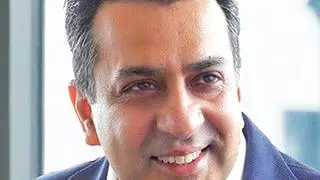Back in 2004, while launching Airtel’s 2G services in Srinagar, Sunil Mittal told a group of journalists that his mission was to connect people from Kashmir to Kanyakumari. Sixteen years later, even though Airtel has a voice telephony network across the length and breadth of the country, there are many places in the country where people still do not have access to mobile internet services.
Last week, Mittal placed a bid to acquire a stake in OneWeb, a UK-based company that has proposed a mega-constellation of hundreds of satellites in low earth orbit to deliver affordable wireless internet services to anywhere in the world. Mittal had earlier acquired a stake in the company in 2015 along with a consortium of investors including Virgin Group, Qualcomm, Hughes and Airbus. But with the company hitting financial problems, Mittal exited the company a few years back. So why is he placing a bid to acquire a stake in OneWeb again? “These low orbit satellites could work like a cellular tower,but in the sky. Instead of putting up hundreds of towers to cover a region, Mittal will be able to cover the same area with just a couple of satellites,” said a satellite industry expert.
OneWeb plans to build a constellation of hundreds of low earth orbit satellites to cover the globe. Low orbit satellites operate between 500 km and 2,000 km above the Earth’s surface. The traditional satellites or geostationary satellites operate at 36,000 km. While the higher altitude allows two or three satellites to cover the entire Earth, there are issues related to latency due to its height. This latency is a problem when it comes to mission-critical data services which need real-time data access. In comparison, a low orbit satellite beam has less footprint but works without any latency in data transmission.
“Low orbit satellite is the new thing in the space race. Elon Musk with his Starlink satellites and Jeff Bezos with Project Kuiper have already made known their intent for the future. Sunil Mittal could be looking at OneWeb as his way into this race,” said a former ISRO official.
Between Musk, Bezos, OneWeb and Telesat as many as 46,100 satellites could be launched in the next few years. In comparison, in the last 60 years less than 9,000 objects have been sent to space.
Fixed broadband
In India, such a constellation will be very useful given the dismal fixed broadband infrastructure. There are less than 50 million fixed broadband users in the country. Most of the population is dependant on mobile phones to access data services. But even the mobile data network outside the top 100 cities is quite erratic in most places. “Over 60 per cent of subscribers on incumbent operators’ networks are still on 2G. The operators are under huge financial strain so they are unable to roll out 4G networks fast enough to meet the growing demand. Low orbit satellites could fill that gap,” said a telecom industry veteran.
Mobile operators also have to keep upgrading their networks from 3G to 4G and now 5G. Each upgrade requires the purchase of fresh spectrum and investments into rolling out new networks. In comparison, investments into a satellite network is a one-time event with minimal additional investments required. But there could be challenges too.
Many challenges
The big concern would be around the pricing of services. Satellite-based connectivity is known to be expensive compared to terrestrial networks. The other issue could be around devices. Traditional mobile phones are not equipped to receive satellite signals so the service provider will have to set up an earth station and then transmit the signals in a way that can be read by a normal smartphone. “There is also the issue of network resilience especially if you have multiple satellites operating in an area. The network has to be planned to precision in a manner that data sessions don’t drop if a person is moving,” said a network planning expert.
But these concerns can be tackled later. For now, Mittal has to first win the bid to acquire a stake in OneWeb.








Comments
Comments have to be in English, and in full sentences. They cannot be abusive or personal. Please abide by our community guidelines for posting your comments.
We have migrated to a new commenting platform. If you are already a registered user of TheHindu Businessline and logged in, you may continue to engage with our articles. If you do not have an account please register and login to post comments. Users can access their older comments by logging into their accounts on Vuukle.